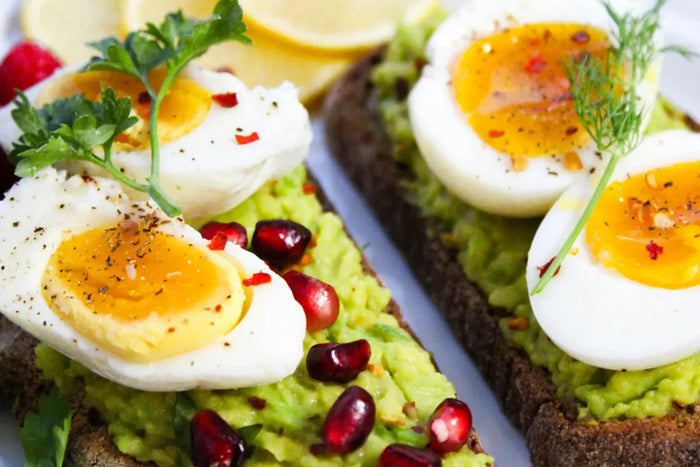Vo2? No, it’s not that haircare brand that you see on the supermarket shelves. It’s all to do with your oxygen and fitness levels. Yes, really.
What is Vo2?
Simply, Vo2 is not a thing, but more accurately, a measurement.
A measurement of the maximum amount of oxygen your body can use during exercise, to be exact. This measurement is also sometimes referred to by other names, namely ‘peak oxygen uptake’ and ‘maximal aerobic capacity’.
One of the most important things to remember when it comes to Vo2 is that there is no “normal max Vo2”, so when or if you work out your maximum Vo2, there is no such thing as a "good Vo2 max".
Why is your Vo2 max important?
Vo2 is a common measurement that athletes consider, particularly when training for an upcoming event. You don’t have to be an up-and-coming Olympian to work out your max Vo2, though, and it’s a great way to determine your general fitness levels, which is a worthwhile exercise to do if you are at the start of a fitness journey and are keen to measure your progress.
A person’s individual Vo2 maximum is particularly important to know, as the greater your vo2 max, the more oxygen someone’s body can inhale, and therefore the greater amount of exercise you can complete.
Basically, in laymen terms, the higher your Vo2 max, the higher your fitness levels.
As above, knowing your Vo2 max and being aware of this measurement is important for a number of reasons, but some integral reasons to measure this metric and keep an eye on your maximal aerobic capacity include providing the athlete with the ability to:
- Track overall fitness improvement
- Train for sports performance and improvement
- Improve heart health
- Reveal underlying cardiovascular functioning
- Monitor overall health
How can you measure your (or someone else’s) peak oxygen uptake
Considering how useful knowing your Vo2 max can be, the good news is that there are a couple of ways that you can measure your peak oxygen uptake, and the method that you adopt will most likely depend on your level of sporting.
- Peak oxygen uptake measurement method #1
The first and most likely way to measure your Vo2 maximum if you are an athlete or professional sportsperson is through visiting a lab.
Whilst this sounds slightly on the medicinal side, when trying to calculate a person’s Vo2 maximum in a lab, the observer will ask the athlete to perform an exercise (most likely running on a treadmill) whilst masked, so that their oxygen levels can be measured over a certain period of time.
- Peak oxygen uptake measurement method #2
On the other hand, if you’re not someone that trains professionally, don’t worry – you can still work out your peak oxygen uptake so that you can learn how to improve your Vo2 max, too.
This method doesn’t seem as ‘official’ as this doesn’t require the above lab-style set up, but you can pretty easily work out your Vo2 max through the use of something that many of us already have: a fitness watch.
Most popular fitness watches available on the market these days offer the functionality of measuring oxygen levels, with Fitbits and Apple Watches springing to mind.
If you’re interested in working out this metric so that you can crack on and learn how to improve your Vo2 max, and want to get yourself a handy Vo2 max calculator, check out our guide on the hottest fitness watches on the market. There are some pretty great options out there.
Here’s how to improve your Vo2 max
Now we’ve identified the link between Vo2 max and exercise, and you’ve learned how to measure your own, you’re probably wondering how to improve your Vo2 max for the benefit of your physical performance.
Don’t worry, we’re way ahead of you. And we’ve got the deets below.
The key to increasing your Vo2 max is down to the type of exercise you engage in. And by type of exercise, we mean both high intensity and low intensity workout styles.
- High intensity interval training
High intensity interval training, often referred to as HIIT, describes a type of cardiovascular exercise that requires short bursts and intervals of exercise that range in length, starting at just 10 seconds all the way up to eight minutes.
Common forms of HIIT methods include:
- Tabata training
- EMOM
- Complexes
- Ladders
When it comes to HIIT, it’s best to partake in this kind of exercise only a couple of times a week. These training types are intensive (the clue is in the name), so putting your body through this too often can do more damage than good.
On the other hand, if you do want to exercise on a daily basis – don’t panic. A great way to increase your Vo2 max is through low intensity training.
Great examples of low intensity training include:
- Running
- Biking
- Hiking
- Rowing
Summary
All in all, working out your Vo2 max is a definite worthwhile metric. Knowing this, particularly at the start of a fitness journey or when training for an upcoming event, is a great tool in your performance artillery.
If you’re not using it already, definitely get on that. ASAP.

















